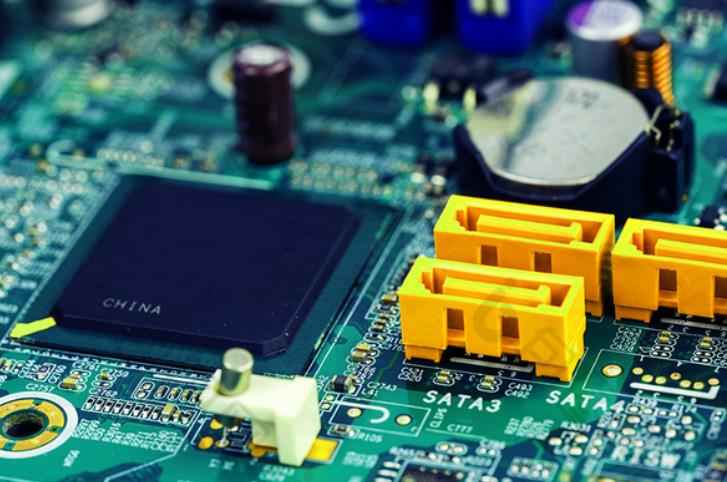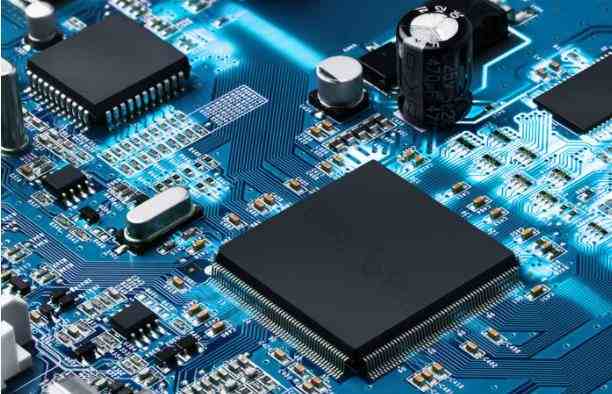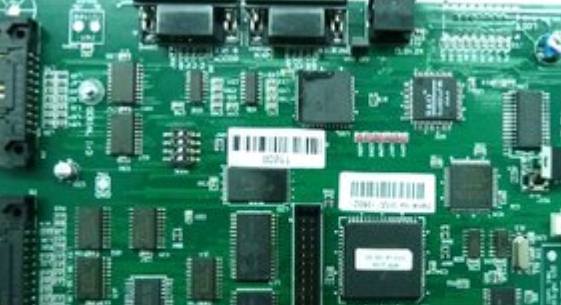Building 6, Zone 3, Yuekang Road,Bao'an District, Shenzhen, China
+86-13410863085Mon.-Sat.08:00-20:00

Rework of common patch in patch processing
Principle of general SMD rework system Hot air flow is concentrated on the pins and pads of surface mount devices (SMDs) to melt solder joints or reflow solder paste to complete disassembly and welding functions.
The main difference between the rework systems of different manufacturers is that the heat source is different or the hot air method is different. Some nozzles generate hot air above the SMD From the perspective of protection devices, the airflow should better flow around the PCB In order to prevent PCB from warping, a rework system with PCB preheating function should be selected
The second BGA repair
Perform BGA repair steps using HT996:
1 Delete BGA
Use a soldering iron to clean and level the remaining solder on the PCB pad. Use a desoldering braid and spade tip for cleaning. Be careful not to damage the pad and solder mask during operation.
2 Dehumidifying treatment
Because PBGA is sensitive to moisture, it is necessary to check whether the equipment is affected with moisture before assembly and dehumidify the affected equipment.
3 Printing solder paste
Since other components have been installed on the surface mount plate, the special small template of BGA must be used The thickness of the template and the size of the opening must be determined according to the diameter and distance of the steel ball After printing, you must check the printing quality If unqualified, the PCB must be cleaned Re print after cleaning and drying For CSP with ball pitch of 0 4mm or less, no solder paste is required. In retrospect, no processing template is required for rework. Paste flux is directly applied to PCB pad Put the PCB to be removed into the welding furnace, press the reflow button, and wait for the machine to complete according to the set program. When the temperature is the highest, press the input and output buttons, and use the vacuum sucker pen to remove the components to be removed
4 Clean the gasket
Use a soldering iron to clean and level the remaining solder on the PCB pad. It can be cleaned with desoldering braid and flat spade tip. Be careful not to damage the pad and solder mask during operation.
5 Moisture proof treatment
Because PBGA is sensitive to moisture, it is necessary to check whether the equipment is affected with moisture before assembly and dehumidify the affected equipment.
6 Printing solder paste
Since other components have been installed on the surface mount plate, the special small template of BGA must be used The thickness of the template and the size of the opening must be determined according to the diameter and distance of the steel ball After printing, you must check the printing quality If not, the PCB must be cleaned. Re print after cleaning and drying For CSP with ball pitch of 0 4mm or less, no solder paste is required, and it does not need to process the template for rework. Paste flux is directly applied to PCB pad
7 - Install BGA
If it is a new BGA, it must be checked whether it is wet. If it is already wet, it should be dehumidified before installation.
The removed BGA equipment can usually be reused, but it must be used after ball planting. The steps for installing BGA equipment are as follows:
A Print SMT and solder paste on the workbench
B Select the appropriate nozzle and turn on the vacuum pump. Inhale the BGA device upward. The bottom of the BGA device completely overlaps the PCB pad. Move the straw downward to install the BGA device on the PCB, and then turn off the vacuum pump.
8 Reflow soldering
Welding temperature can be set according to equipment size, PCB thickness and other specific conditions. The welding temperature of BGA is about 15 degrees higher than that of traditional SMD.
9 Inspection
BGA welding quality inspection requires X-ray or ultrasonic inspection equipment In the absence of inspection equipment, the welding quality can be judged by functional test, or inspected according to experience
Lift the surface assembly board with BGA welded, look around the BGA, and observe whether it is transparent, whether the distance between BGA and PCB is the same, whether the solder paste is completely melted, whether the shape of the solder ball is correct, and whether the solder ball is collapsed.
--If there is no light, it means there is a bridge or solder ball between the solder balls;
--If the shape of the solder ball is incorrect and there is deformation, it means that the temperature is not enough, the welding is not enough, and the self positioning function is not fully played when the solder reflows;
--Solder ball collapse degree: the collapse degree is related to the welding temperature, solder paste amount and pad size. When the pad design is reasonable, the distance between BGA bottom and PCB after reflow soldering is 1/5-1/3 smaller than that before soldering. If the solder ball collapses too much, the temperature is too high and bridging is easy to occur.
--If the distance between BGA circumference and PCB circuit board is inconsistent, it means that the surrounding temperature is uneven
Principle of general SMD rework system Hot air flow is concentrated on the pins and pads of surface mount devices (SMDs) to melt solder joints or reflow solder paste to complete disassembly and welding functions.
The main difference between the rework systems of different manufacturers is that the heat source is different or the hot air method is different. Some nozzles generate hot air above the SMD From the perspective of protection devices, the airflow should better flow around the PCB In order to prevent PCB from warping, a rework system with PCB preheating function should be selected
The second BGA repair
Perform BGA repair steps using HT996:
1 Delete BGA
Use a soldering iron to clean and level the remaining solder on the PCB pad. Use a desoldering braid and spade tip for cleaning. Be careful not to damage the pad and solder mask during operation.

2 Dehumidifying treatment
Because PBGA is sensitive to moisture, it is necessary to check whether the equipment is affected with moisture before assembly and dehumidify the affected equipment.
3 Printing solder paste
Since other components have been installed on the surface mount plate, the special small template of BGA must be used The thickness of the template and the size of the opening must be determined according to the diameter and distance of the steel ball After printing, you must check the printing quality If unqualified, the PCB must be cleaned Re print after cleaning and drying For CSP with ball pitch of 0 4mm or less, no solder paste is required. In retrospect, no processing template is required for rework. Paste flux is directly applied to PCB pad Put the PCB to be removed into the welding furnace, press the reflow button, and wait for the machine to complete according to the set program. When the temperature is the highest, press the input and output buttons, and use the vacuum sucker pen to remove the components to be removed
4 Clean the gasket
Use a soldering iron to clean and level the remaining solder on the PCB pad. It can be cleaned with desoldering braid and flat spade tip. Be careful not to damage the pad and solder mask during operation.
5 Moisture proof treatment
Because PBGA is sensitive to moisture, it is necessary to check whether the equipment is affected with moisture before assembly and dehumidify the affected equipment.
6 Printing solder paste
Since other components have been installed on the surface mount plate, the special small template of BGA must be used The thickness of the template and the size of the opening must be determined according to the diameter and distance of the steel ball After printing, you must check the printing quality If not, the PCB must be cleaned. Re print after cleaning and drying For CSP with ball pitch of 0 4mm or less, no solder paste is required, and it does not need to process the template for rework. Paste flux is directly applied to PCB pad
7 - Install BGA
If it is a new BGA, it must be checked whether it is wet. If it is already wet, it should be dehumidified before installation.
The removed BGA equipment can usually be reused, but it must be used after ball planting. The steps for installing BGA equipment are as follows:
A Print SMT and solder paste on the workbench
B Select the appropriate nozzle and turn on the vacuum pump. Inhale the BGA device upward. The bottom of the BGA device completely overlaps the PCB pad. Move the straw downward to install the BGA device on the PCB, and then turn off the vacuum pump.
8 Reflow soldering
Welding temperature can be set according to equipment size, PCB thickness and other specific conditions. The welding temperature of BGA is about 15 degrees higher than that of traditional SMD.
9 Inspection
BGA welding quality inspection requires X-ray or ultrasonic inspection equipment In the absence of inspection equipment, the welding quality can be judged by functional test, or inspected according to experience
Lift the surface assembly board with BGA welded, look around the BGA, and observe whether it is transparent, whether the distance between BGA and PCB is the same, whether the solder paste is completely melted, whether the shape of the solder ball is correct, and whether the solder ball is collapsed.
--If there is no light, it means there is a bridge or solder ball between the solder balls;
--If the shape of the solder ball is incorrect and there is deformation, it means that the temperature is not enough, the welding is not enough, and the self positioning function is not fully played when the solder reflows;
--Solder ball collapse degree: the collapse degree is related to the welding temperature, solder paste amount and pad size. When the pad design is reasonable, the distance between BGA bottom and PCB after reflow soldering is 1/5-1/3 smaller than that before soldering. If the solder ball collapses too much, the temperature is too high and bridging is easy to occur.
--If the distance between BGA circumference and PCB circuit board is inconsistent, it means that the surrounding temperature is uneven
Just upload Gerber files, BOM files and design files, and the KINGFORD team will provide a complete quotation within 24h.







